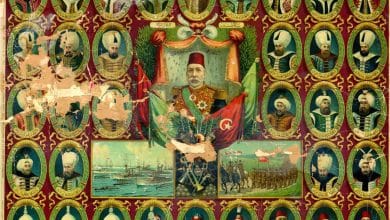Sultan Mehmed II’s mysterious medallion goes up for auction in London
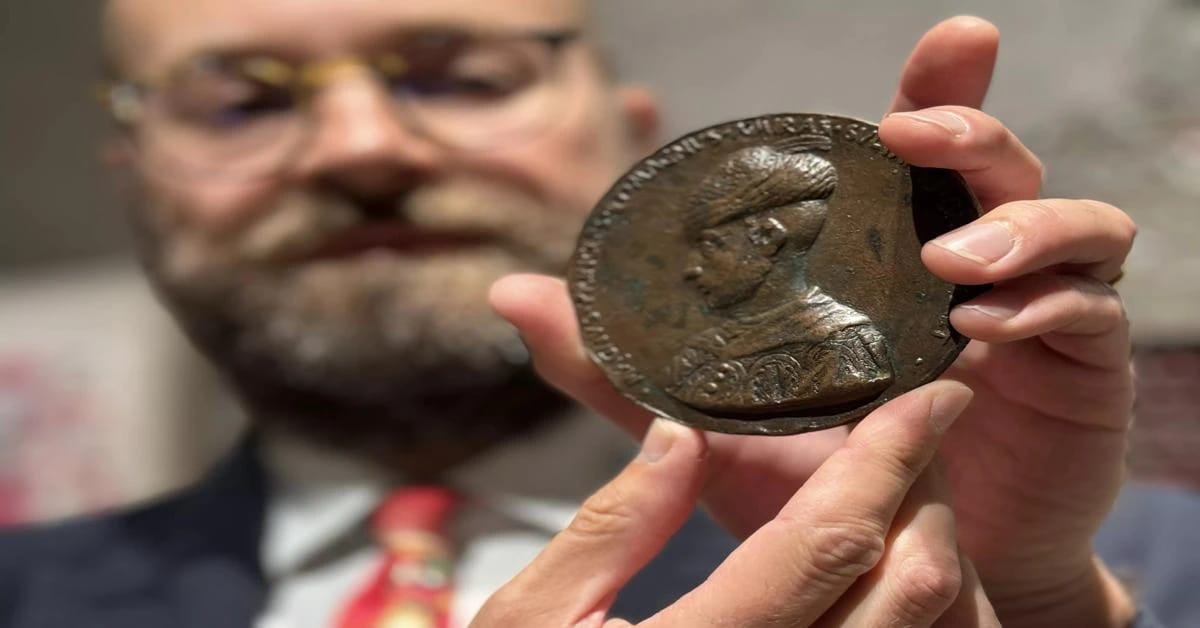
The auction house, which dates Sultan Mehmed II’s talismanic medallion, which will be auctioned in London today, to 1450, assesses that the medallion was ordered by Sultan Mehmed II himself.
Oliver White, Director of Islamic and Indian Art at Bonhams Auction House, told Anadolu Agency reporters about the details of the medallion, which is on sale with an estimated sales price of $1.9-2.5 million (₺61-81 billion), along with other works at the auction.
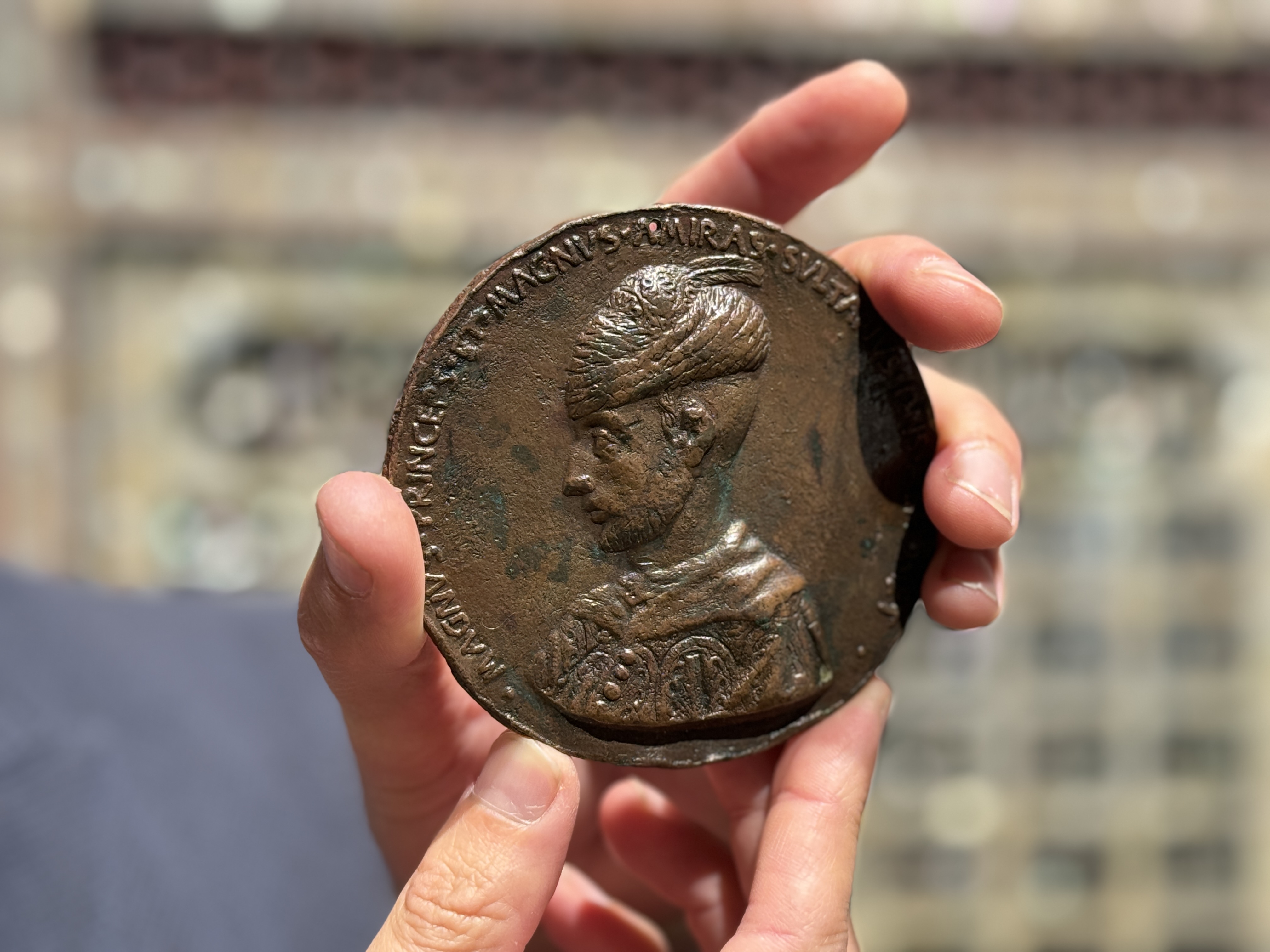
The auction, which includes many artifacts from the Islamic world and India, will also sell swords, tiles, edicts and a publication from the Ottoman period.
The medallion with the portrait of Fatih Sultan Mehmed stands out as the most important piece at the auction. The medallion, which is exhibited separately from all other works at the auction house, is thought to have been made in Italy during the Renaissance period.
Gentile Bellini’s Sultan Mehmed II painting was known as the oldest portrait of the sultan until the medallion was discovered in a collection 20 years ago, as explained by White.
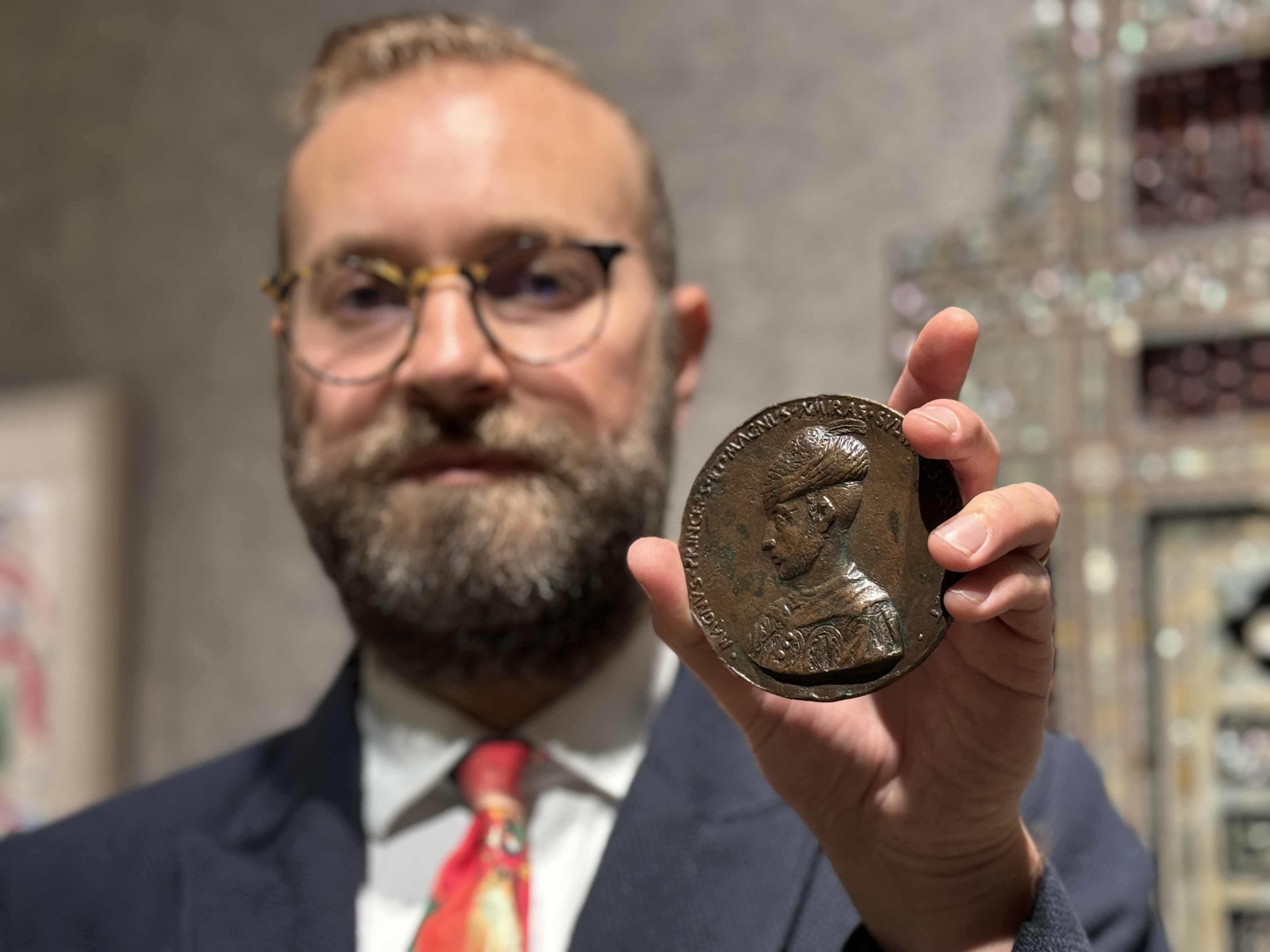
Grand Prince, Grand Emir, Sultan Mehmed Efendi
White said that they dated the medallion to 1450 based on details such as, “Sultan Mehmed is depicted as ‘Magnus Princep (Great Prince)’ on the medallion. The phrases surrounding the medallion show us that it was made in his youth because this is not an imperial title. This phrase was also used in a treaty between the Ottomans and Venice in the 1440s. That’s why we dated it to 1450.”

White also shared details about the history of the medallion before the auction and said, “It appeared in a sale in Italy in 2000. Before that, it was in an Italian collection from the 19th century.”
White said that the inscription surrounding the medallion reads “Magnus Princep, Magnus Amiras, Sultan Dns Memomet (Great Prince, Great Emir, Sultan Mehmed Efendi)” and noted that the turban is decorated with flower and feather details.
White also mentioned that the medallion made before the conquest of Istanbul has a talismanic feature and said, “It must be a medallion he personally ordered because no one could have a medallion made in his name. The hole in the center, which is in the original state, made us think that it was hung somewhere or even worn around the neck.”
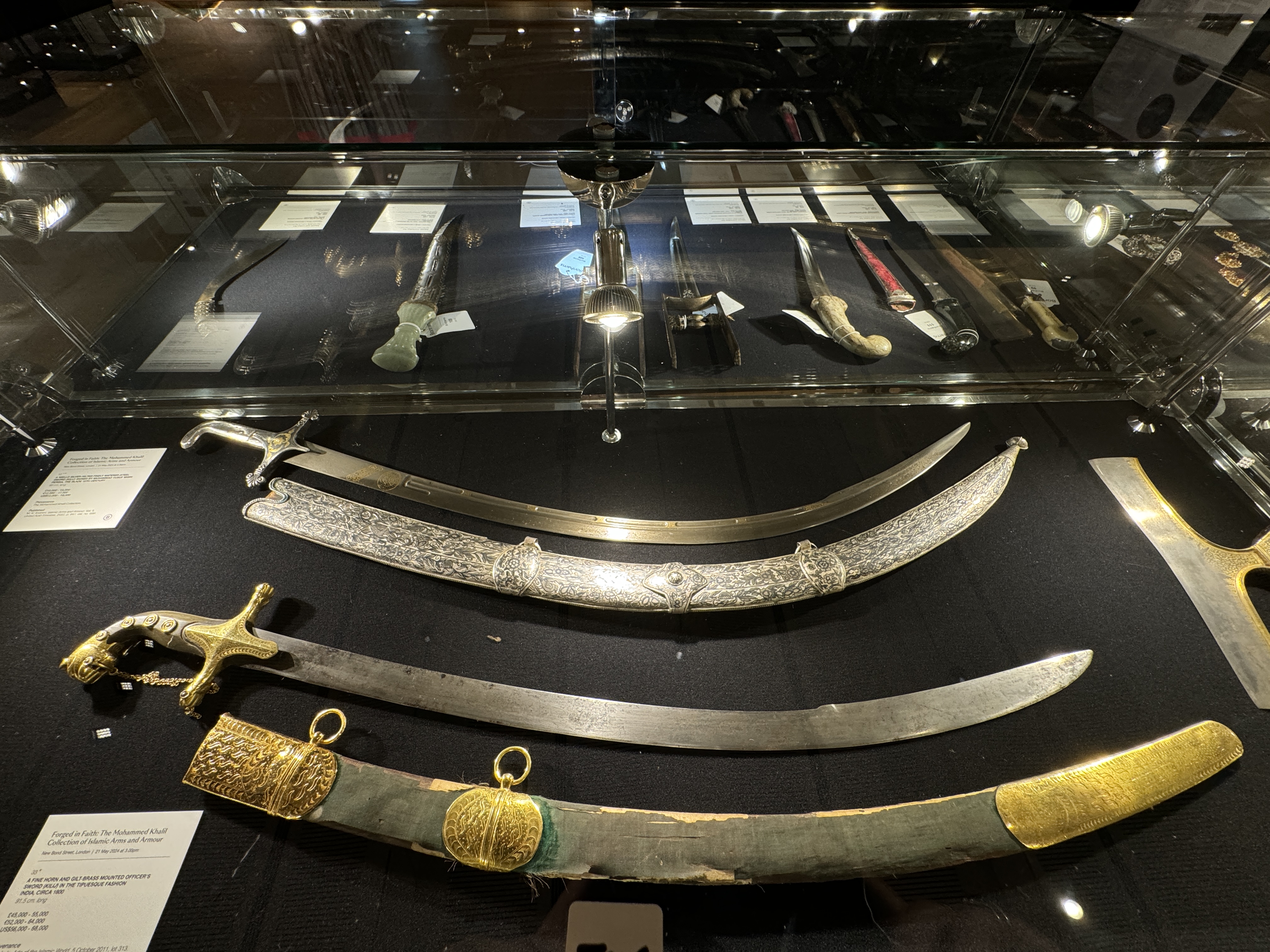
Ottoman edicts and swords are also on sale
The auction will also see the sale of weapons and military uniforms from the Mohammed Khalil collection that were used in the history of the Islamic world.
Among the many military items ranging from elephant heads to daggers, there is an Ottoman sword with the Ayat al-Kursi inscribed in gold gilding.
The hilt of the sword is made of silver and dated to the 17th century, while the blade is estimated to have been made in the 16th century.
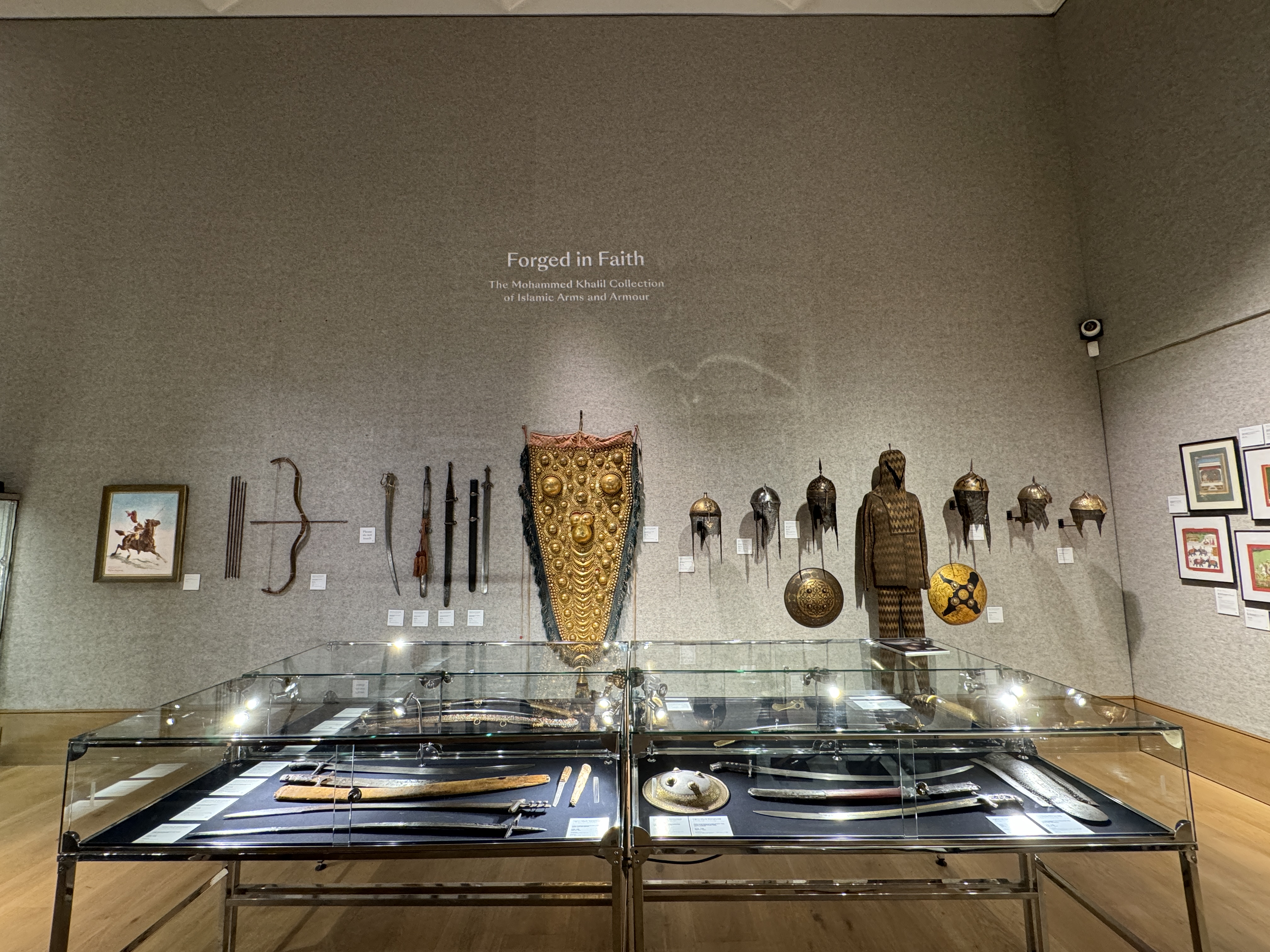
Armor from the Safavid state, helmets from the Mamluk state, as well as an Ottoman bow decorated with floral patterns will be auctioned.
Among the Ottoman artifacts to be sold are two sultan’s edicts, one of which is a Mecidiye order of merit awarded to William Samuel Newton.





